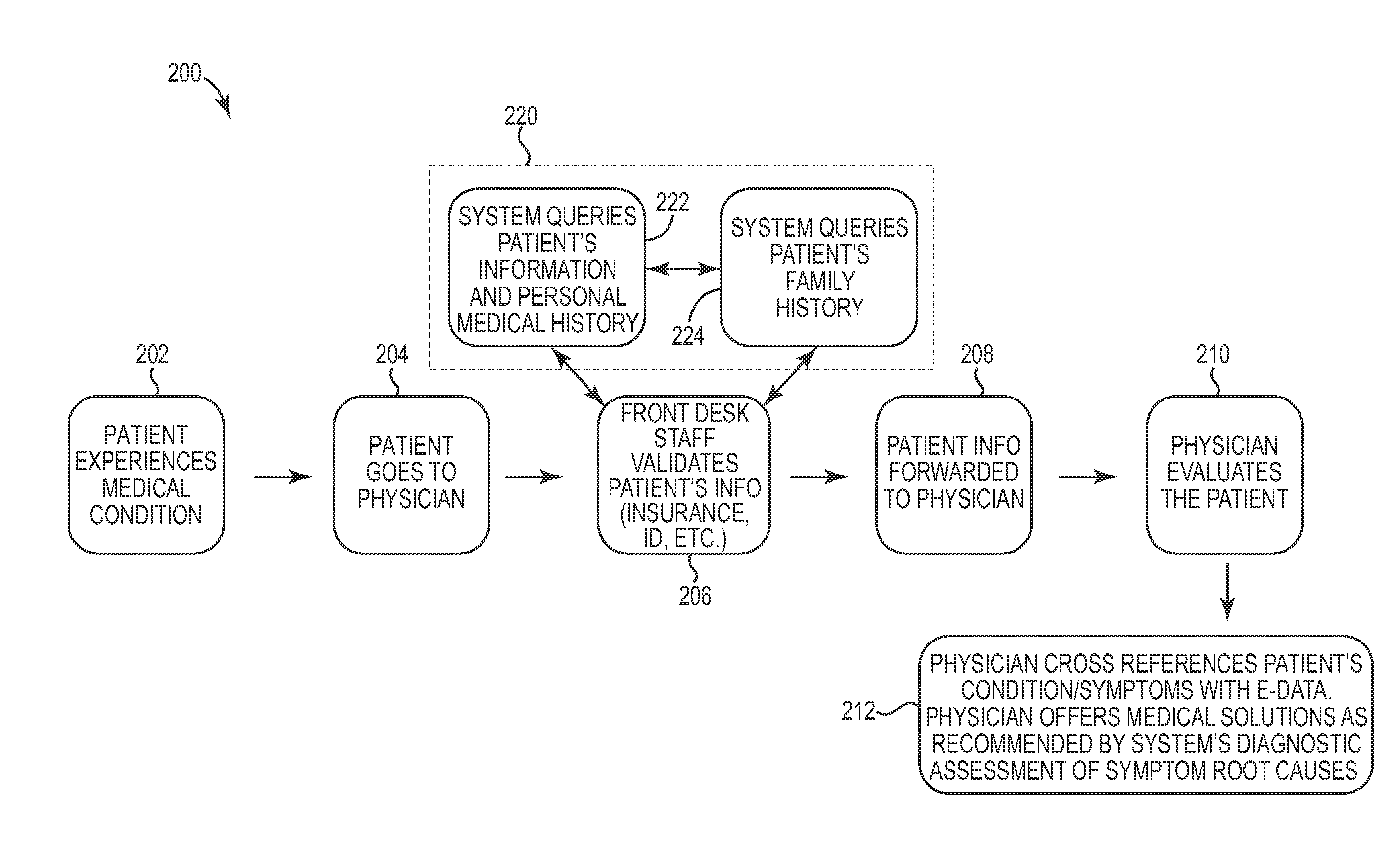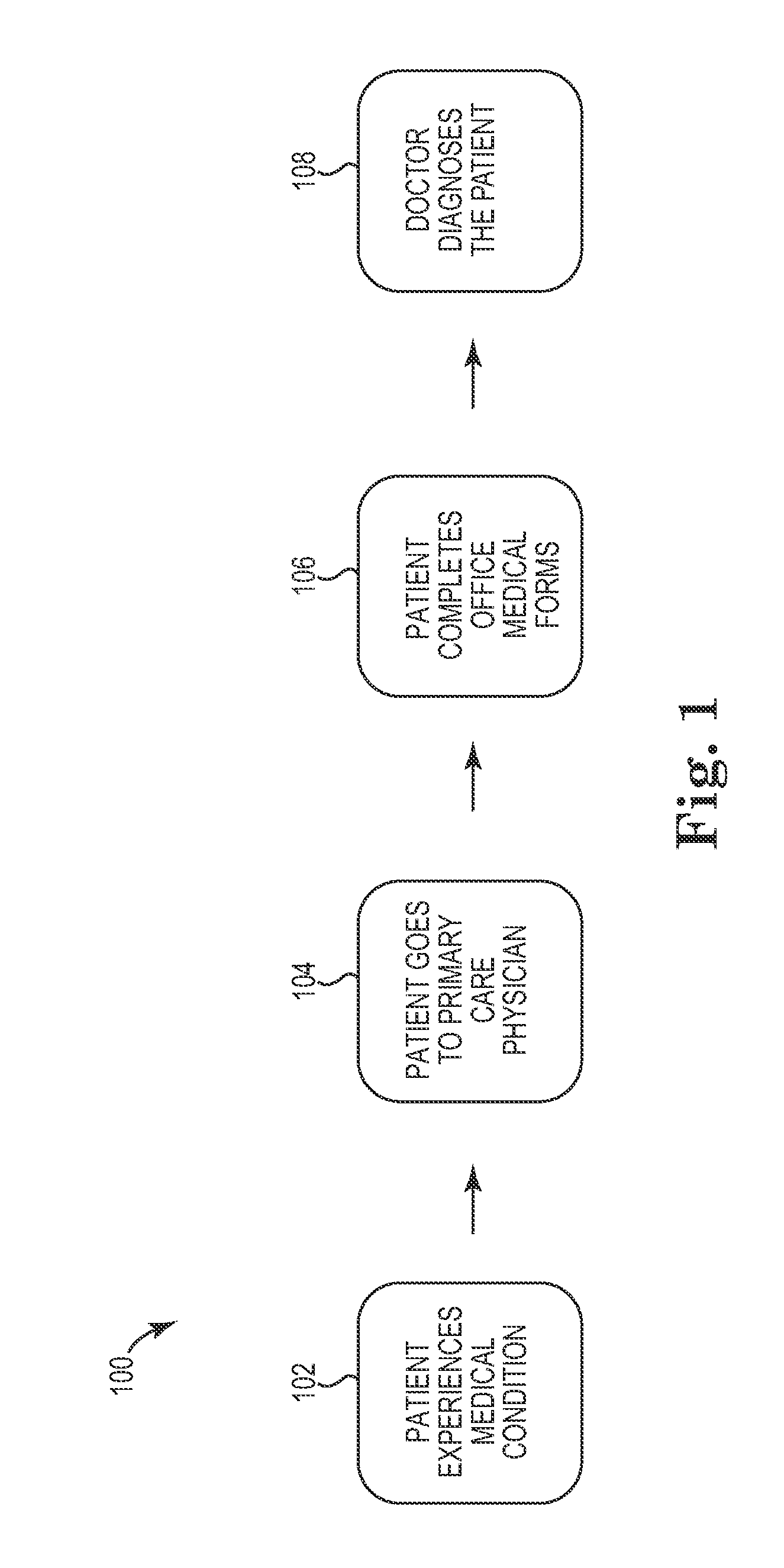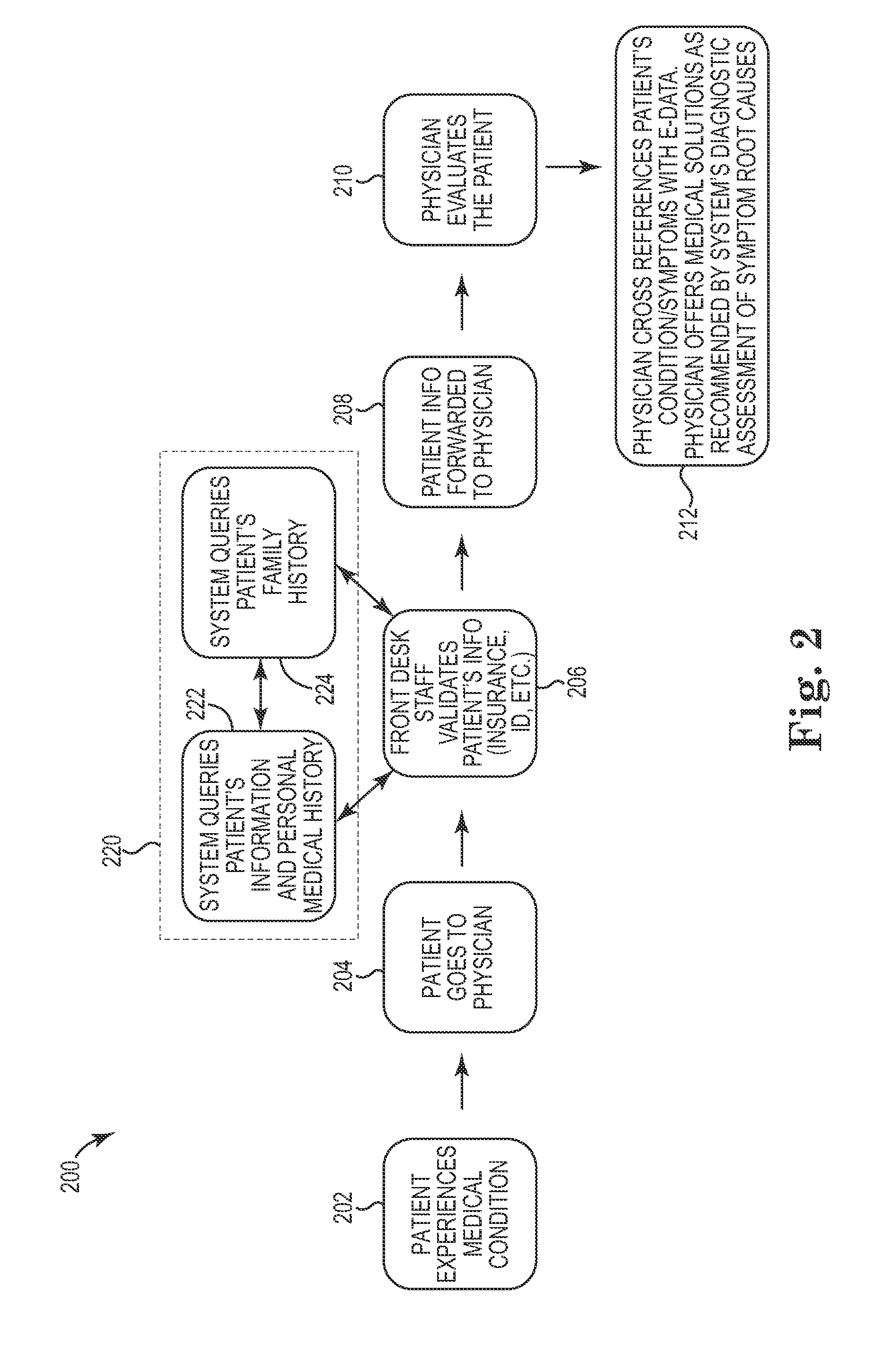Medical history diagnosis system and method
a medical history and diagnosis system technology, applied in the field of information processing, can solve the problems of unfavorable patient privacy or portability, healthcare providers that are not well-aware of a patient's medical history, and many patients feel disconnected from their personal medical data, so as to reduce the cost and risk of medical treatment, avoid privacy or portability problems, and diagnose better
- Summary
- Abstract
- Description
- Claims
- Application Information
AI Technical Summary
Benefits of technology
Problems solved by technology
Method used
Image
Examples
example 1
[0032]The Physician accesses the diagnostic intelligence system using a physician interface and locates relevant background medical information for Patient A. The Physician inputs his or her recent diagnosis that was prepared for the Patient A on the basis of the physician's current evaluation. The system returns information that indicates if the diagnosis is a recurring item for the patient. It offers previous and currently recommended treatment plans for the diagnosis. If the physician enters a recommended treatment plan, the system can advise if it is a good course. If items in the patient's profile or medical history suggest that this treatment plan is adverse to the patient's health, the diagnostic intelligence system may offer alternative suggestions.
example 2
[0033]Not only can the patient assess his or her medical history, authorize personal medical history access to other family, medical practitioners, and other interested parties, but the patient can use the interface for personal benefit and access the interface at regular intervals to maintain a healthy lifestyle. For example, the patient recently has visited a physician who offers a treatment plan that may sound questionable based on patient's knowledge of his or her medical history. The patient can log into system, view or enter the diagnosis, and review information relevant to the condition and suitable treatment plans. If the patient doesn't see his or her recommended treatment plan, the patient can input the treatment plan for system validation of effectiveness based on his or her medical history.
example 3
[0034]As soon as the physician inputs the patient's treatment plan (including medication), the system automatically sends a prescription request to the patient's pharmacist. This will minimize / eliminate prescription wait time for the patient. Additionally, information stored within the pharmacist's computer system may be pulled and integrated into the intelligent diagnostic system. Therefore, a fuller view of information such as allergic reactions, past medications, and other concerns may be shared between the physician and pharmacist.
PUM
 Login to View More
Login to View More Abstract
Description
Claims
Application Information
 Login to View More
Login to View More - R&D
- Intellectual Property
- Life Sciences
- Materials
- Tech Scout
- Unparalleled Data Quality
- Higher Quality Content
- 60% Fewer Hallucinations
Browse by: Latest US Patents, China's latest patents, Technical Efficacy Thesaurus, Application Domain, Technology Topic, Popular Technical Reports.
© 2025 PatSnap. All rights reserved.Legal|Privacy policy|Modern Slavery Act Transparency Statement|Sitemap|About US| Contact US: help@patsnap.com



